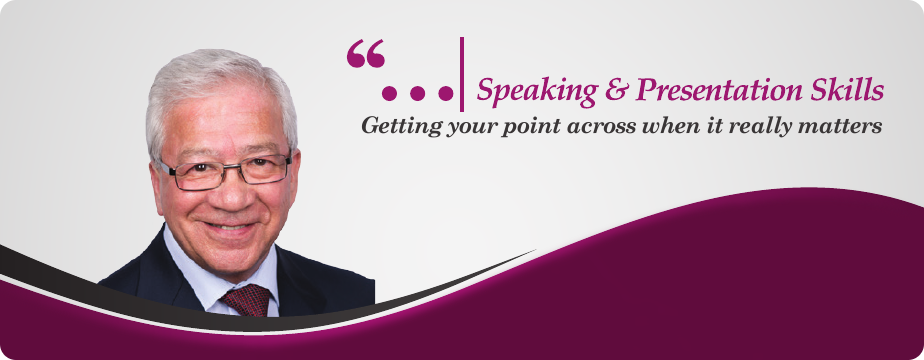-
What’s the story?
Make a point, tell a story; tell a story, make a point. That’s an easy enough mantra to follow in speeches and presentations, but what kind of story should you tell?
The three factors that work in story telling are:
1. They illustrate the point and are easy to understand and remember
2. We are all conditioned, from childhood, to like stories
3. They can connect with your listeners’ backgroundsThe first two are fairly obvious, but the third one often surprises people when I raise it during my training courses. Backgrounds?
Let’s take an extreme example, just to make the point. Suppose you are pitching to the owner of a small business. Did you stop to consider why he started that business? One such small business owner told me, only the other day, “I started this business because no one would give me a job.”
Another (geeky) micro business owner told me his technical expertise is such that he is always in demand, and he doesn’t have to market himself.
For people like them, you may want to avoid stories about gregarious situations and talk, instead, about self sufficiency and the virtues of independence. Talk about the injustice of bureaucracy and the triumph of the ‘small’ over the ‘large’.
At the same time, be aware of your own background story, and avoid pleading your own position. Remember, the main purpose of the story is to advance your business case, not to entertain or to beat the drum of self interest.
Think about how movies can touch your own emotions. That’s the power of story telling. Go ye and do likewise.
-
How to DELIVER!
If you have a speech or presentation to make, the way you deliver it will make all the difference. Here’s a 10-point checklist for you:
1. Speak with conviction and energy – each speech can expend as much energy as a full day’s work
2. Be focused – facts tell, feelings sell!
3. Make it a performance – use drama, images, visual aids and ENERGY
4. Be distinctive – make it memorable – put your personal mark on it
5. Use vocal variety – entertain and surprise them – keep them interested
6. Have empathy – talk to them, not at them – don’t fear personal contact – smile: give a reason to like you
7. Maintain good eye contact – one friendly face at a time
8. Show what you mean – use gestures and positive body language
9. Stand tall and balanced – stay centred, walk with a purpose
10. Serve the audience’s needs – offer information, entertainment, involvement. Finally, PRACTISE, PRACTISE, PRACTISE!
I have some Open courses coming up in central London. 29th June, 16th & 22nd September, if you are interested. Drop me a line.
Phillip
-
What is the real meaning behind what people say?
You are a communicator — that’s why you are on this page. So you can have fun thinking about the real meaning of the statements below.
These are just a few examples of the double-speak that we all engage in. But I wonder if we always hear the sub-text when someone says:
I hear what you say
I see where you are coming from
I hope you like strong tea
I’ll get back to you on that
Here, let me get you a coaster
No, no, I’m not offended. I can take a joke.
The conference covered a lot of ground and there was a full and frank exchange of views
You look really young
Please don’t mind me
It’s not that I don’t believe you …
Q. How do you like him?
A. Actually, I hardly know him
A. He’s very good at his job
A. He means well
A. I’ve got nothing against himQ. How do you like my house?
A. It has that lived-in look
A. It makes you feel at home
A. What an interesting colour scheme
A. I hate a home where everything is neatly put awayQ. You’ve heard my complaint. Will you put it right?
A. I have listened with interest and made a note of your views
A. I’ll make these points clear to all concerned
A. I assure you I will keep it top-of-mind
A. I’ll look into it, first chance I get
I hope I’m not interruptingForgive me, but …
You must come over for dinner some timeWe’re all in this together
Now, how about some of your own?
-
Lose those labels
We all carry around labels from the past — labels that define us in ways we’d rather forget.
We carry them like dead weights hung around our necks, holding us back from being the people we’d prefer to be. We change, we move on, we gain new status in our lives … but still those embarrassing labels haunt us.
Is there nothing we can do to get rid of them?
Click on the clip below, and hear what I think we could do:
[youtube=http://www.youtube.com/v/R5u4OMfjDlE]
www.phillipkhan-panni.com
